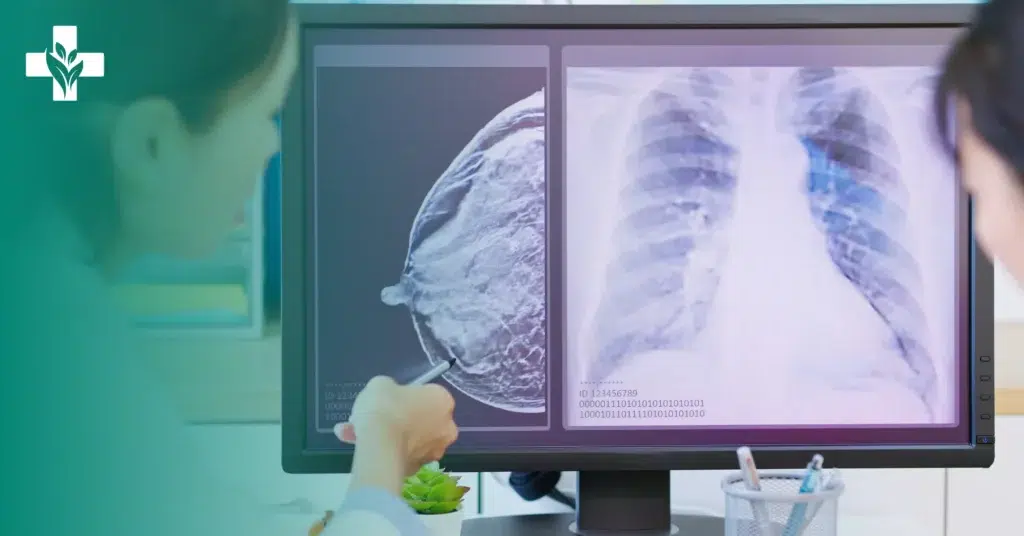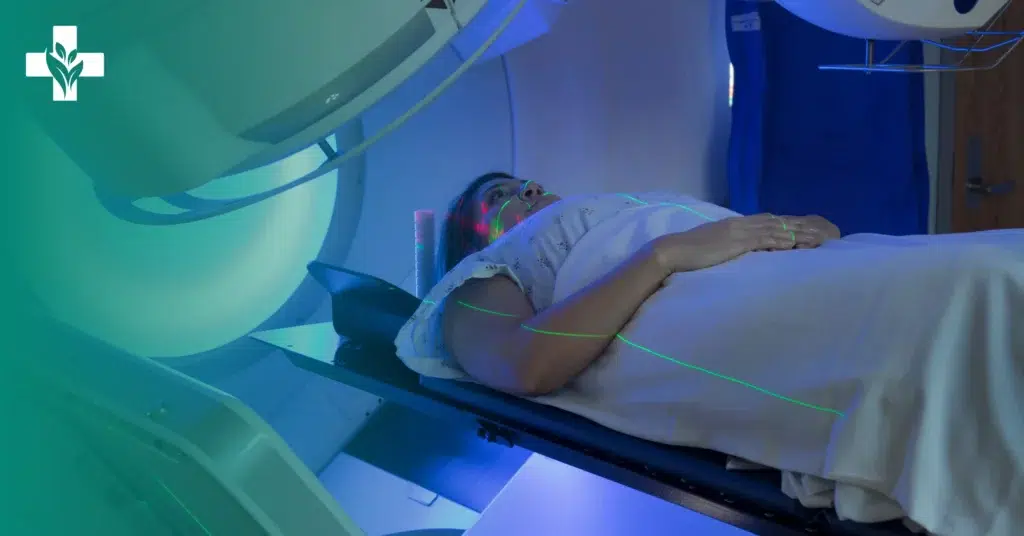Inflammatory Breast Cancer: Recognizing the Signs and Seeking Treatment
Facing a breast cancer diagnosis is an overwhelming experience, affecting the lives of millions each year. One of its most aggressive and rare forms is Inflammatory Breast Cancer (IBC).
This form of cancer is much different from the other types as it is harder to diagnose and spreads rapidly. Its early signs, such as redness, are subtle, making it easier to be mistaken for a skin infection.
IBC affects only a small percentage of 1-5% of breast cancer patients but causes 10% of breast cancer deaths. So, it is crucial to equip yourself with as much knowledge as you can to notice even its subtle signs on time.
To learn more about this aggressive form of breast cancer, make your way to the end of this article. We will discuss everything you need to know, from the symptoms and risk factors to the diagnosis and treatment options for IBC.
What is Inflammatory Breast Cancer
Inflammatory Breast Cancer, or IBC, is an aggressive disease where cancer cells block the lymph vessels in the skin of the affected breast, making it look red, swollen, and inflamed. Most of these cancer cells are developed from the cells lining the breast’s milk ducts and later spread to other areas.
This type of cancer progresses extremely rapidly, mostly in weeks or months’ time. On diagnosis, it is usually found to be either stage III or IV, depending upon the spread of the cancer cells.
How is it different
Inflammatory Breast Cancer does not look like a typical breast cancer that causes lumps. It may also not show up on a mammogram (an x-ray of the breast) and is harder to diagnose.
Mostly, it is diagnosed in later stages, making it harder to treat. So, it has a worse prognosis (outcome) and survival chances than other types of breast cancer.
Inflammatory Breast Cancer symptoms
As it is unlikely to spot a lump in the case of Inflammatory Breast Cancer, some of its symptoms can include
- Redness (Erythema) and swelling (Edema) affecting one-third of the breast or more
- Retracted or inverted nipple
- Bruised appearance of the skin
- Pitting of the skin on the breast, making it look like an orange peel (peau d’orange)
- Tender, itchy, heavy, or painful breasts
- Swollen lymph nodes near the collarbone, under the arms, or both
- A rapid increase in the size of the affected breast
Causes
The causes of Inflammatory Breast Cancer are not clear, but doctors do know that it begins when a change is developed in the DNA of a breast cell. It instructs the breast cell to divide rapidly, causing a blockage in the lymph vessels in the breast’s skin, causing the breast to appear red, dimpled, and swollen.
These DNA changes usually begin in the cells of the ducts carrying breast milk to the nipple, but they might also develop in the tissue where breast milk is produced.
Risk factors
The following factors can add up to your risk of developing IBC:
- Being a woman
- It is more frequently diagnosed in people between the ages of 40 and 50
- Black women have a higher risk of IBC than white women
- Obesity is known to contribute to IBC. People who are obese are more likely to have IBC
Diagnosis of Inflammatory Breast Cancer

The following tests are suggested if you are suspected of having Inflammatory Breast Cancer.
Physical Exam
In the case of IBC, you don’t usually observe lumps, making it difficult to diagnose at the initial stages. But, all confirmed cases of IBC showed at least one of the three signs- Erythema, Edema, or pitted skin. In some cases, your doctor may rule out conditions, like Mastitis, that might cause changes similar to IBC in the appearance of your breast.
Imaging
Some imaging tests may help identify the presence and severity of the cancer. These include a mammogram, breast ultrasound, and breast MRI scan.
Biopsy
IBC is diagnosed by a biopsy wherein a small piece of the breast tissue is taken out and examined in a lab to check for signs of cancer. It is the only way to confirm a suspected case of Inflammatory Breast Cancer. These biopsy results also help your healthcare provider to formulate the most suitable treatment plan for you. Other tests may include a bone scan, PET-CT scan, or CT scan.
Treatment of Inflammatory Breast Cancer
Treatment for IBC depends upon the results of the scans and imaging tests. Your doctor might suggest one or more of the following treatment plans.
Chemotherapy
Chemotherapy uses drugs to kill cancer cells. It works by shrinking the cancer cells so that they are easier to remove during surgery. You might also receive chemotherapy after surgery to ensure the removal of any cancer cells that might remain post-surgery. It can be administered intravenously, i.e., through the vein or as a pill.
Surgery
Since IBC spreads rapidly, conservative treatments that involve the removal of affected tissue while saving the rest of the breast prove ineffective. So, to treat it, surgery is performed to remove the affected breast entirely (Mastectomy) and the nearby lymph nodes.
Radiation therapy

This method uses a machine that destroys cancer cells by directing intense energy toward them. It might cause some of the healthy tissue to be damaged in the process, but it heals after the treatment ends.
Targeted therapy
This therapy targets the protein that controls the cancer cells’ growth, division and spread. While small molecule drugs are given as pills or capsules that can be swallowed, artificial antibodies that imitate the function of the human immune system are given intravenously.
Hormone therapy
Also called endocrine therapy or hormone treatment, this cancer treatment slows or stops the growth of cancer cells that depend on hormones to thrive. Hormone therapy can be given orally or through injections to the muscle in your thigh, hip, arm, etc.
Immunotherapy
It uses the ability of the immune system of the body to prevent, control, or eliminate cancer. Immunotherapy can be given as oral pills, topical creams, and directly into the veins or the bladder (intravesical).
Prognosis of Inflammatory Breast Cancer
Prognosis refers to the chances for a patient who has been diagnosed with cancer to be treated successfully and recover completely. The factors that usually influence a patient’s prognosis include:
- Type of cancer
- Location of the cancer
- Stage of the disease
- Patient’s age and overall health
- Response to the treatment
Inflammatory Breast Cancer survival rates are not as high as other forms of breast cancer as it develops and spreads quickly and aggressively. However, it is important to note that the prognosis may be better or worse depending on each woman, their medical history, and other factors.
Takeaway
Inflammatory Breast Cancer (IBC) is a rare form of cancer but is very aggressive and spreads rapidly. Some of its early signs include redness, swelling, and pitted skin like an orange peel. Other symptoms can be bruising, inverted nipples, warmth, and tenderness in the breast.
Unlike other types of breast cancer, no lumps can be observed in IBC, making diagnosis difficult. Hence, most cases go unnoticed until they reach stage III or stage IV. So, doctors suggest physical exams, imaging, biopsy, and other tests to confirm the presence and extent of the spread of the cancer to determine the most appropriate treatment plan for the best chances of recovery.
Frequently Asked Questions
How did I know I had Inflammatory Breast Cancer?
The signs of Inflammatory Breast Cancer include redness or swelling involving over one-third of the breast. Pitted skin like an orange, inverted nipple, and warmth in the breast are also seen in women with IBC. If you experience these symptoms, seek medical attention immediately for further evaluation and diagnosis.
How is Inflammatory Breast Cancer diagnosed?
Inflammatory Breast Cancer is diagnosed conclusively through a biopsy wherein a small piece of the breast tissue is taken out and examined. Some preliminary tests may include a combination of physical exams and imaging tests. PET scans and bone scans can also help determine the spread of cancer cells.
What causes Inflammatory Breast Cancer?
The exact cause of Inflammatory Breast Cancer is not clear. However, changes in the breast cell DNA, usually those located in the ducts that carry milk to the nipple, are responsible for Inflammatory Breast Cancer. Sometimes, these DNA changes also develop in the tissue where breast milk is produced.
Is stage 3 Inflammatory Breast Cancer curable?
Stage 3 IBC is regional and treated with chemotherapy. However, since it is an aggressive cancer, it is harder to treat and has more chances of recurrence. The chances of treatment success varies from person to person. Your doctor can explain your prognosis better to you.
What is the difference between breast cancer and Inflammatory Breast Cancer?
Inflammatory Breast Cancer does not form a lump, unlike most types of breast cancer. So it is harder to diagnose and treat. Moreover, the Inflammatory Breast Cancer survival rate and prognosis are also worse than those of other breast cancers.
What does Inflammatory Breast Cancer look like?
Inflammatory Breast Cancer can present with symptoms like redness, swelling, and warmth in the breast. The breast may appear enlarged, firm, and tender to the touch, with a thickening of the skin that resembles an orange peel. These symptoms develop rapidly and should be evaluated by a medical professional immediately.
What is Inflammatory Breast Cancer?
Inflammatory Breast Cancer (IBC) is a rare but aggressive form of breast cancer that accounts for approximately 1-5% of all breast cancer cases. It typically presents with symptoms such as redness, swelling, and warmth in the breast and can spread quickly. Early detection and treatment are crucial for improving outcomes.
What are the early signs and symptoms of Inflammatory Breast Cancer?
You may notice a very early inflammatory breast cancer rash, which can cause the skin to appear red and swollen. Other subtle signs of inflammatory breast cancer include dimpled skin, pitted like an orange, and inverted nipples.
WowRx uses only high-quality sources while writing our articles. Please read our content information policy to know more about how we keep our content reliable and trustworthy.






